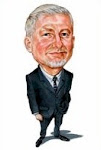In the 1980s Ken worked for a large stock brokerage firm. Because he was known as a technical analyst, the head of stock market research asked him about market psychology. As a financial analyst, he couldn’t understand how people’s attitudes about investing could affect the stock market. The financial world was all about corporate earnings and book values. Everything useful in the stock market could be expressed mathematically: it was all about accounting. Things like optimism, fear, concern, and capitulation meant nothing to a fundamental analyst.
But Ken maintained that the key to understanding risk in the stock market was to understand investors’ attitudes. The more optimistic they are, the more risky the stock market is. The more cautious and concerned investors are, the less risk. And when investors are outright scared of the stock market, the risk is at its lowest. In his book, Beyond the Bull, he explains how investor attitude changes during the normal course of a stock market cycle. It’s the most important part of stock market analysis.
Case in point: here and now. How do investors feel about the market now, in June, 2009? Are they afraid? Are they cautious? Fearful? Or are they confident the market is about to give them back what they lost in 2008? Are they bullish or bearish? Are they “afraid” of missing out on the next bull market?
We are in constant contact with ordinary investors and stock brokers. And right now they are REALLY BULLISH. It seems that most of them were fully invested in the stock market at this time last year, June 2008. Within 5 months they had lost 45%! Winter of 2008 and ‘09 was a long painful financial experience for most of them. But spring brought new hope. ‘Midst news of increasing unemployment and GM’s bankruptcy, the stock market rallied. Analyst after analyst talked about the market “climbing a wall of worry.”
Review: “Climbing a wall of worry” refers to a phenomenon that occurs at important bottoms in stock market cycles. Economic news is so bad that the investing public worry that the economy is getting worse and the stock market will continue down. In other words, the stock market goes up, but investors do not believe it… they are too worried.
Is that what’s happening now? That’s not what we see.
What we see is “don’t worry, be happy.” It started with last year’s lightning losses in the crashing stock market of September 2008. People were shocked! Then came Obama-mania: hopes that the new president’s stimulus package would somehow save us all. Surely a new economic age had begun: surely the economy would rise like a phoenix out of the ashes of America’s fallen corporate giants. Then came a normal bear market rally: March 9, 2009 to now. The Canadian stock market has retraced about 40% of its 2008/9 drop; the US market about 30%. This rally has both Canadian and US investors breathing a huge sigh of relief. “Another four or five months of this and we’ll break even for the year!” The latest stock market buzz-phrase is “green shoots.” These are the early signs of economic recovery: the green shoots of spring, growing out of the icy soil of winter… optimistic hope that the worst is over and the recovery is just around the corner.
That’s not a wall of worry. The wall of worry is about investors NOT believing that things are getting better. In June 2009, investors think [hope?] things ARE getting better. They think they WILL make back the money they just lost in 2008. If they are worried at all, they are worried about missing out on the recovery.
When the 2008/2009 bear market finally does end, the first move up will be met with an attitude of disbelief. Investors will have a bad attitude toward the stock market. The green shoots they see now will be replaced by the green light they don’t see.
Friday, June 19, 2009
Subscribe to:
Posts (Atom)
